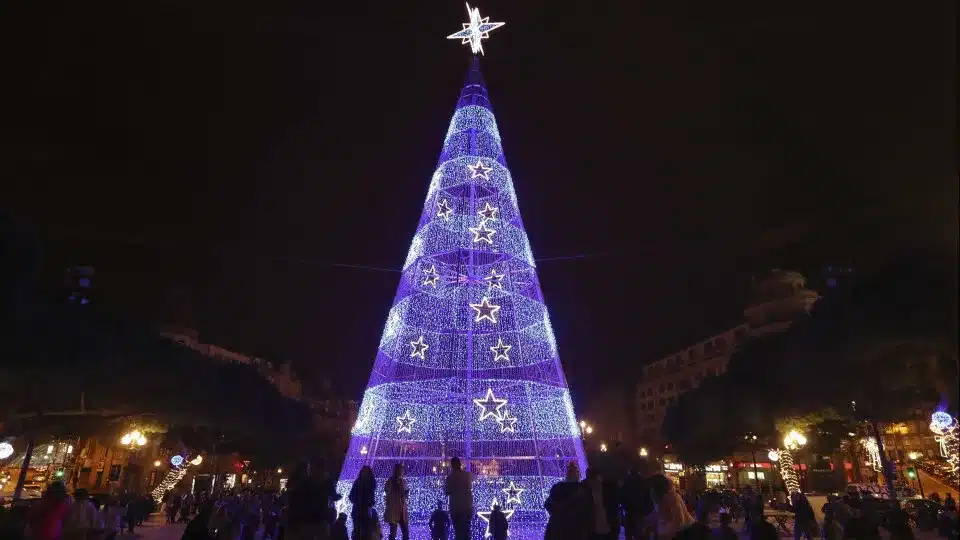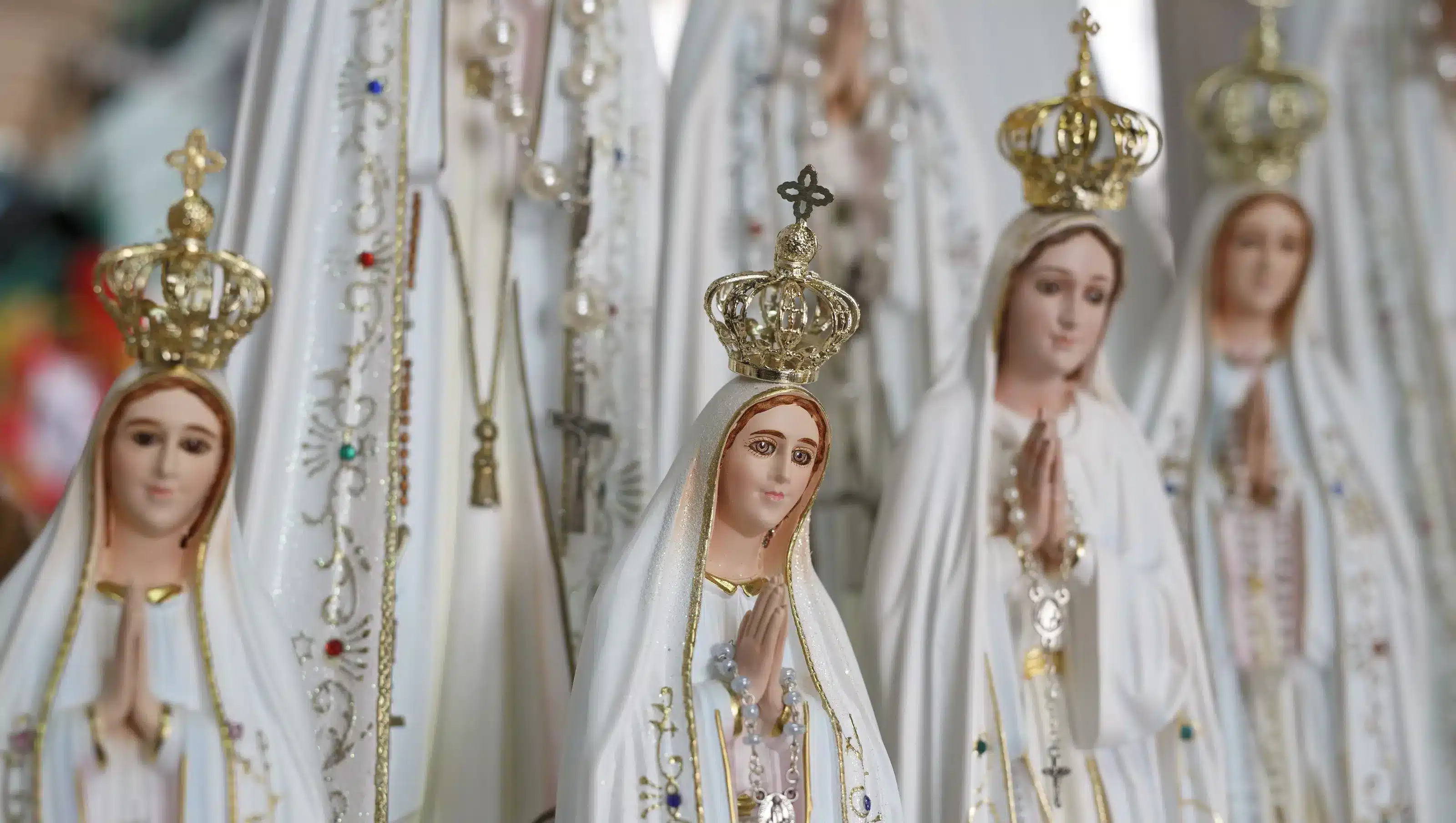Paul VI opened the way for papal visits to Portugal in 1967, in the midst of the Cold War. Because of Fatima – of which John Paul II was a devotee – the country has already received six visits from four popes, the last in 2017, on the centenary of the Apparitions.

The country that welcomed Pope Francis in 2017, for the centenary of the apparitions of Fatima, is not the same one that received Pope Paul VI in May 1967. It is not only the time that separates the coming of the two (or the four who have already been in Portugal, in six visits) – it is also the way. A social reality that has changed a lot even in the last six years. Although it is always because of Fatima that Portugal has entered the itinerary of the Catholic Church, this time the center of attention is Lisbon, the main stage of World Youth Day (WYD).
This will be the longest papal visit to Portugal, and also one of Pope Francis’ longest stays in one country. Francis arrives in Lisbon on Wednesday morning, passes through Fátima on Saturday, and returns to Rome on Sunday. It will be five days of formal and informal meetings with the authorities, but above all with young people, the pope’s great purpose.
Francis will undoubtedly be the one who enjoys unparalleled popularity in the history of the Church, is quoted and admired even by non-believers, but who admire him as a leader, for the way he dares to speak of all current issues, even those that are usually taboo for the Catholic Church itself. The last time he was in Portugal, for the centenary of the Apparitions, all the focus was on Fatima. His Marian devotion was already known, but from then on he too became a pilgrim Pope of Fatima. As had happened before with John Paul II, who also has a statue in the grounds of the Shrine.
The first visit of a pope to Portugal took place in 1967, when Paul VI went to Fatima for the 50th anniversary of the Apparitions. The memory of Maria Francisco, 73, takes her to “a rainy night, a dirt enclosure, and many, many people”. She was 17 years old and walked from a village near Figueira da Foz to Fatima. “There were very few cars at that time. People went on foot. And there was a lot of praying, especially for those who were going overseas”. At that time, a statue of Paul VI had already been erected in Leiria, in a square that was filled to honor him, knowing that he had landed at the Monte Real air base. “He had recently received the liberation movements of Angola, Guinea and Cape Verde. Some people didn’t like it. When we arrived at the statue, someone had put a tire around his neck in protest,” recalls São Graça, 69, born in a village near Ourém. A travel agent, she has lost count of the number of times she has been to Rome, alone or as a cicerone for organized groups. In Fatima, she participated only in the visits of Popes Benedict XVI and Francis, whom she considers “unique, a phenomenon of God on earth”.
After Paul VI’s visit, 15 years passed before Portugal received a pope again. It happened with the charismatic John Paul II, in 1982 – when he came to Fatima to thank for having survived the attack he had suffered a year earlier in Rome. In 1991, he returned to Portugal, again to Fatima. He returned for the third and last time in 2000, already very weak, to preside over the celebration of the beatification of Francisco and Jacinta Marto. Ten years later, it was the turn of Benedict XVI, who had been to Fatima before but only as Cardinal Ratzinger. He was the guardian of the third secret, after having met Sister Lucia at the Carmel in Coimbra in 1996, on the occasion of the international anniversary pilgrimage, which he presided over.
1967 Paul VI, the first visit to Fatima in the middle of the cold war
On the evening of May 12, 1967, in Fatima, Salazar managed no more than a brief eight-minute conversation with the pope. Paul VI landed at Monte Real air base for a pastoral and unofficial visit, at a time of strained relations between Portugal and the Vatican, following the pope’s visit to India.

Neither the government nor the president of the Council, Salazar, liked the fact that Paul VI had visited India in 1964, three years after the invasion of Goa, Daman and Diu by the Indian state, considering the trip an “insult to the Portuguese nation”. The visit to Fátima was very popular, with thousands applauding, on the way from Monte Real to Cova da Iria, the pope who, three years earlier, had announced the granting to the sanctuary of the Golden Rose (a distinction awarded by the pope to personalities, sanctuaries, churches or cities for services rendered to the Church or to the good of society).
Father Anselmo Borges (ordained that year in the Shrine) remembers well the charisma of the Pope in the middle of the Cold War. He still sees him with his fists clenched in the air, calling for peace in the world: “Men, be men!”. He was, after all, the first pope to set foot in Portugal.
1982 Memories of an attack on John Paul II’s first visit
“I come here today because on this very day of the month, last year, the attempt on the life of the Pope took place in St. Peter’s Square in Rome, which mysteriously coincided with the anniversary of the first apparition in Fatima, on May 13, 1917,” said John Paul II, on his first visit to Fatima, in May 1982. Ironically, on the night of May 12, he was again the target of an attack, when the former integrist priest Juan Fernandez Khron (a former Spanish disciple of the ultraconservative French Archbishop Marcel Lefébvre) tried to hit him with a knife, accusing him of betraying the Church. One of the Portuguese policemen escorting the Pontiff was prompt. The pope escaped unharmed.

João Paulo II, em Fátima, 13/05/1982
Foto de: António Aguiar
Besides Fatima, in this first visit to Portugal the Polish Pope went to Lisbon, Coimbra, Vila Viçosa, Braga and Porto.
1991 Soares warns Pope of East Timor’s plight
In 1984, the Pope had offered the Shrine of Fatima the bullet that hit him in the abdomen in the attack in Rome, a projectile that in 1989 was embedded in the crown of the image of Our Lady. And two years later, in 1991, John Paul II returned for another visit to Portugal. It was the biggest security operation known up to that time, in a visit followed closely by the media. Lisbon, the Azores and Madeira also received Karol Wojtyla. At the time, Mário Soares was President of the Republic and Cavaco Silva Prime Minister. Soares – a republican and a secularist – took advantage of the pope’s presence to warn about the situation in East Timor, still under Indonesian military occupation since 1975.

João Pimpão, now 47, president of the Parish Council of Meirinhas (Pombal), was only 16 years old but managed to join the entourage of journalists accompanying the pope. “It was the time I was closest to God,” he tells DN, who at the time was accompanying his father, the journalist Pimpão dos Santos, who has already died. He was never close to the Pope, but photographed him from afar, like the others.
2000 The Pilgrim Pope’s farewell to Fatima

When John Paul II returned to Portugal for the last time, in May 2000, already very weak, it was known that it would probably be the last time of the pilgrim Pope in Fatima. “The highest expression of the recognition of Fatima by John Paul II took place on May 13, 2000, with the beatification of the two youngest seers (Francisco and Jacinta Marto) and the announcement of the publication of the third part of the secret”, considered, at the time, Luciano Guerra, former Rector of the Shrine. The third part of the Secret includes precisely the reference to an attack on the Pope, and John Paul II linked this revelation to the event of May 13, 1981, in Rome, which he survived because – he said several times – “a mother’s hand” diverted the bullet’s trajectory. The content [of this third secret] was written by Lucia in the 1940s. The first two parts (the vision of hell and the devotion to the Immaculate Heart of Mary) were revealed in 1941; the third (the vision of the pilgrim and martyred Church and the city in ruins), written in 1944, remained under reservation and was publicly revealed at Fatima, precisely in the year 2000.
2010 Benedict XVI and the visit that crossed Lisbon and Porto

( Steven Governo / Global Imagens)
When Benedict XVI visited Portugal, between May 12 and 14, 2010, the site of the Shrine of Fatima was not at all unknown to him. Much less the content of the Message of Fatima. As Cardinal Joseph Ratzinger, he had presided over the celebrations of October 13, 1996. But his connection goes back further: as Prefect of the Congregation for the Doctrine of the Faith, he had studied the Apparitions and the Message of Our Lady. The visit also included a Mass in Praça do Comércio, in Lisbon, which gathered about 500 thousand people, and another in Porto, in Praça da Liberdade. But before he arrived, he had already prepared the message during the journey from Rome to Lisbon. And it was for the interior of the Church: “The greatest persecution of the Church does not come from enemies outside, but is born of the sin of the Church.” It was the first time the pope had referred to the pedophilia scandals that were already affecting the image of the Catholic hierarchy.
2017 Francis’ first time at the centenary of the apparitions

(Reinaldo Rodrigues/Global Imagens)
On May 12, 2017, Francis had thousands of pilgrims waiting for him. It is estimated that they reached a million people the next day. The helicopter carrying him landed at 5:45 p.m. that Friday at the Fatima stadium, which already bore his name. From there he went to the Shrine in an open vehicle (the famous papamobile), on a route of about four kilometers. Francis was not only going to Fatima to celebrate the 100th anniversary of the apparitions. In fact, it was also his task to canonize Blessed Francisco and Jacinta Marto, the two shepherd siblings who died in the midst of a pandemic (pneumonia). A sea of people attended. On the evening of May 12, the ceremonies that included the candlelight procession were witnessed by the highest figures of the State, since this visit was only directed to Fatima. He stayed only 23 hours in Portugal. But it will have been one of the most remarkable visits, among the six that have been recorded so far.



